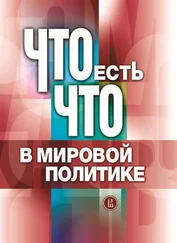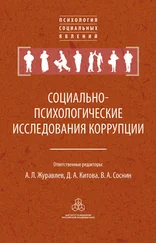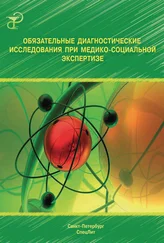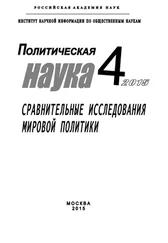H. H. Wendt, «Die Lehre des Paulus verglichen mit der Lehre Jesu», ZTK 4 (1894): 1–78, цит. с. 78; цит. по: Furnish, «Jesus-Paul Debate», с. 20.
См.: K. Ehrensperger, That We May Be Mutually Encouraged: Feminism and the New Perspective in Pauline Studies (London: T&T Clark, 2004), с. 19–27.
См.: C. H. Dodd, The Epistle to the Romans (Moffatt NT Commentary; London: Hodder & Stoughton, 1932), с. 43.
Об этом см.: S. Heschel, The Aryan Jesus: Christian Theologians and the Bible in Nazi Germany (Princeton: Princeton University Press, 2008).
Так, Альфред Розенберг полагал, что Павел фальсифицировал (т. е. иудаизировал) благую весть, объявив Иисуса иудейским Мессией: см.: A. Rosenberg, Der Mythus des 20. Jahrhunderts: Eine Wertung der seelisch-geistigen Gestaltungskämpfe unserer Zeit (Munich: Hoheneichen, 1930), с. 605 (цит. по: Furnish, «Jesus-Paul Debate», с. 33, прим. 54).
Разумеется, Дэвис не был единственным, см.: Campbell, Paul and Christian Identity , с. 17–21.
Обзор этих исследований см. в специальном выпуске BibInt 13.3 (2005): Paul Between Jews and Christians , особ. статьи Уильяма Кэмпбелла (W. S. Campbell, с. 298–316); Нила Элиота (N. Elliott, с. 239–249); Памелы Эйзенбаум (P. Eisenbaum, с. 224–238) и Марка Наноса (M. D. Nanos, с. 255–269). См. также, например, Campbell, Paul and the Creation of Christian Identity , с. 17–21; Kathy Ehrensperger, Paul at the Crossroads of Cultures , гл. 5; Mark Nanos, «Paul and the Jewish Tradition: The Ideology of the Shema», в кн.: Celebrating Paul: Festschrift in Honor of Jerome Murphy-O’Connor and Joseph Fitzmyer (ed. P. Spitaler; Washington, DC: Catholic Biblical Quarterly Monograph Series, 2011), с. 62–80; Pamela Eisenbaum, Paul Was Not a Christian: The Real Message of a Misunderstood Apostle (New York: HarperOne, 2009).
В этом вопросе, на мой взгляд, чрезвычайно важен акцент на аспекте памяти, запоминания и устной традиции. См.: S. Byrskog, S tory as History – History as Story: The Gospel Tradition in the Context of Ancient Oral History (WUNT 123; Tübingen: Mohr Siebeck, 2000); Bauckham, Jesus and the Eyewitnesses , с. 264–318.
Об этом сообщает книга: Fredriksen, Jesus of Nazareth .
Несмотря на интригующие гипотезы Ричарда Бокэма, литературным материалом, ближайшим ко времени Иисуса и его первых последователей, остаются послания Павла, – те из них, которые неоспоримо принадлежат апостолу. См.: Bauckham, Jesus and the Eyewitnesses , с. 114–154.
Подробнее об этом см.: K. Ehrensperger, Paul and the Dynamics of Power: Communication and Interaction in the Early Christ-Movement (LNTS 325; London: T&T Clark, 2007), с. 31–62.
См.: Bauckham, Jesus and the Eyewitnesses , с. 312–313. Также см.: B. A. Misztal, Theories of Social Remembering (Philadelphia: Open University, 2003), с. 6.
Критику некоторых феминистических подходов, оперирующих этой парадигмой, см.: Corley, «Feminist Myths of Christian Origins».
Ср.: D. Boyarin, Borderlines: The Partition of Judaeo-Christianity (Philadelphia: University of Pennsylvania Press, 2004).
Ср.: C. Wolff, «Humility and Self-Denial in Jesus’ Life and Message and in the Apostolic Existence of Paul», в кн.: Paul and Jesus , ed. Wedderburn, с. 145–160, цит. с. 145.
Ср.: S. Freyne, Jesus: A Jewish Galilean: A New Reading of the Jesus Story (London: T&T Clark, 2004). Из многочисленных трудов Гезы Вермеша см.: G. Vermes, Jesus in His Jewish Context (Minneapolis: Fortress, 2003); однако возражения на это мнение см.: J. H. Elliott, «Jesus the Israelite Was Neither a ‘Jew’ Nor a ‘Christian’: On Correcting a Misleading Nomenclature», JSHJ 5 (2007): 119–154.
То, что Павел называет себя фарисеем, указывает на то, что он учился в Иерусалиме, поскольку у нас нет никаких сведений о том, что подобное образование можно было получить в Диаспоре. См.: A. L. A. Hogeterp, Paul and God’s Temple: A Historical Interpretation of Cultic Imagery in the Corinthian Correspondence (BibTS 2; Leuven: Peeters, 2006), с. 235 и далее.
Ср.: Ehrensperger, Paul and Dynamics of Power , с. 4–11.
Вопрос, читал ли апостол Павел Священное Писание по-еврейски или по-гречески, мы обсуждать не будем. Вопрос о том, какие именно тексты Павел и его помощники считали «Священным Писанием», также нуждается в дальнейшем исследовании. Ср.: C. Tuckett, «Paul and Jesus Tradition: The Evidence of 1 Corinthians 2:9 and Gospel of Thomas 17», в кн.: Paul and the Corinthians: Studies on a Community in Conflict (ed. T. J. Burke and J. K. Elliott; NovTSup 109; Leiden: Brill, 2003), с. 55–73. О значении Писаний как нарратива, причастного к передаче благой вести, см.: Kathy Ehrensperger , Paul at the Crossroads of Cultures , гл. 6.
Bultmann, Theology of the New Testament , 1:3–32.
Более подробный анализ понятия «подражания Христу» у Павла см. в кн.: Ehrensperger, Paul and Dynamics of Power , с. 137–154; также см.: D. A. Brondos, Paul on the Cross: Reconstructing the Apostle’s Story of Redemption (Minneapolis: Fortress, 2006), с. 70–72.
См., напр.: Wedderburn, «Paul and the Story of Jesus», в кн.: Jesus and Paul, ed . Wedderburn, с. 161–189.
Однако Уильям Кэмпбелл ясно показывает, что это не так, см.: «Perceptions of Compatibility between Christianity and Judaism in Pauline Interpretation», BibInt 13.3 (2005): 298–316.
Джеймс Данн пишет: «Случай в Антиохии убедил Павла, что оправдание верой и соблюдение закона – не взаимодополняющие части одного целого, что они прямо друг другу противоречат»; в кн.: J. Dunn, Jesus, Paul and the Law: Studies in Mark and Galatians (London: SPCK, 1990), с. 162. Хотя Данн сознает, что отделение христианства от иудаизма происходило постепенно и на ранних стадиях, он считает, что именно Павел задал парадигму несовместимости иудаизма и «бытия во Христе».
Читать дальше
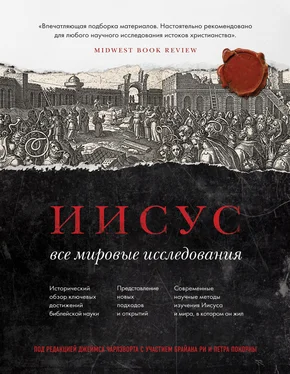
![Коллектив авторов - Что мы думаем о машинах, которые думают [Ведущие мировые ученые об искусственном интеллекте]](/books/31211/kollektiv-avtorov-chto-my-dumaem-o-mashinah-kotorye-thumb.webp)
